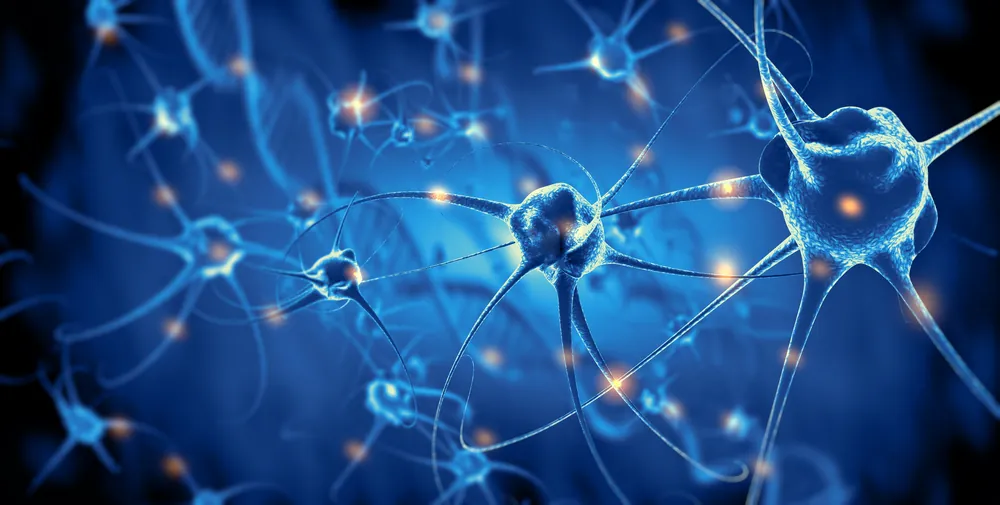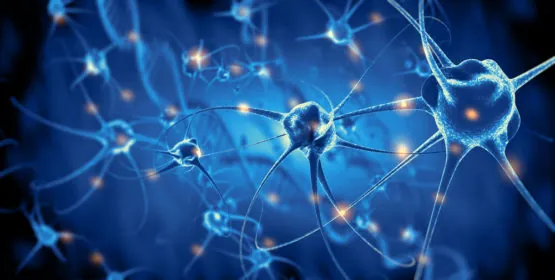Thanks to a new technique, researchers from the Salk Institute’s Gage laboratory have shown that impaired energy production might be a reason why human brains are susceptible to age-related diseases in the first place [1].
In particular, Salk scientists observed that induced neurons (iNs) obtained from fibroblasts of older individuals had dysfunctional mitochondria and therefore decreased energy levels compared to younger neurons. Out-of-shape mitochondria have previously been implicated in degenerative brain diseases, such as Alzheimer’s and Parkinson’s, and this finding might help reveal more about the connection between these diseases and this particular hallmark of aging.
Mitochondrial dysfunction 101
Our readers are probably familiar with the 2013 study “The Hallmarks of Aging”, a review describing in detail what is known of the typical signs of age-related degeneration at the molecular level [2]. Mitochondrial dysfunction is a hallmark in its own right, and it can be thought of as the meltdown of cellular energy production facilities.
Mitochondria are organelles found in each and every of your cells; they are responsible for harnessing the chemical energy of the food you eat to keep you alive. Mitochondria generate energy but also toxic waste—namely, reactive oxygen species, also known as free radicals. Free radicals are molecules with unpaired electrons desperately looking to pair up, which makes them extremely reactive and prone to stealing electrons from nearby molecules. Molecules they steal electrons from become damaged; mitochondrial DNA, which is different from nuclear DNA and nowhere near as well protected from free radicals, is easily damaged by the free radicals created by mitochondria themselves. These mutations reduce mitochondrial efficiency and tend to spread out, with healthy mitochondria being slowly supplanted by mutated ones, ultimately turning cells into free-radical production facilities.
A novel way to study older neurons
Neuronal tissue isn’t easy to obtain from living humans. Samples have been taken from deceased donors, of course, but being able to study neurons coming from patients who are still alive may provide useful insights. Up until recently, this was achieved by turning different types of cells more easily sampled from living patients, such as skin cells, into pluripotent stem cells first and finally into neurons. However, this procedure has the side effect of largely rejuvenating the converted cells, wiping away the very signs of aging that the researchers wish to study.
While it is possible to simulate the effects of aging on these cells by exposing them to stressors, this procedure doesn’t necessarily lead to the same markers that aging would produce; for this reason, in 2015, the Gage lab researchers developed a method to turn human fibroblasts directly into neurons without having to turn them into pluripotent stem cells first and showed that doing so preserves age-related changes, such as gene expression [3]. Neurons so obtained are the previously mentioned induced neurons.
Results on mitochondria
In 2018, Salk researchers decided to use their 2015 technique to investigate the state of mitochondria in aged neurons. The scientists sampled skin cells from humans between the ages of zero and 89 years, examined their mitochondria, turned the cells into iNs, and finally observed mitochondria again after the conversion.
While they were still fibroblasts, harvested cells from every patient exhibited few age-related changes in general, but this was no longer the case once the cells were turned into neurons. Mitochondria in neurons induced from fibroblasts of older donors were fragmented, less dense, and less efficient than in iNs coming from younger fibroblasts; this hints that neural mitochondria are more sensitive to age-related changes than skin cell mitochondria. Researchers found these neural mitochondria to be defective in virtually every aspect; it is their guess that, since neurons rely more heavily on mitochondria for energy than other cells do, the effects of aging on them are more prominent than on other cell types.
Conclusion
The authors of this paper believe that their creation will be a very useful tool to study neurological aging and age-related diseases in general; indeed, Gage lab researchers believe that their 2015 method to turn fibroblasts directly into neurons may be adapted to create older heart and liver cells, for example, enabling scientists to more easily study the effects of aging in the body.
As always, the road ahead is still very long, but every newly added piece of the puzzle, however tiny, gets us closer to understanding and addressing the causes of age-related diseases.
Literature
[1] Kim, Y., Zheng, X., Ansari, Z., Bunnell, M. C., Herdy, J. R., Traxler, L., … & Schlachetzki, J. C. (2018). Mitochondrial Aging Defects Emerge in Directly Reprogrammed Human Neurons due to Their Metabolic Profile. Cell Reports, 23(9), 2550-2558.
[2] López-Otín, C., Blasco, M. A., Partridge, L., Serrano, M., & Kroemer, G. (2013). The hallmarks of aging. Cell, 153(6), 1194-1217.
[3] Mertens, J., Paquola, A. C., Ku, M., Hatch, E., Böhnke, L., Ladjevardi, S., … & Gonçalves, J. T. (2015). Directly reprogrammed human neurons retain aging-associated transcriptomic signatures and reveal age-related nucleocytoplasmic defects. Cell stem cell, 17(6), 705-718.




